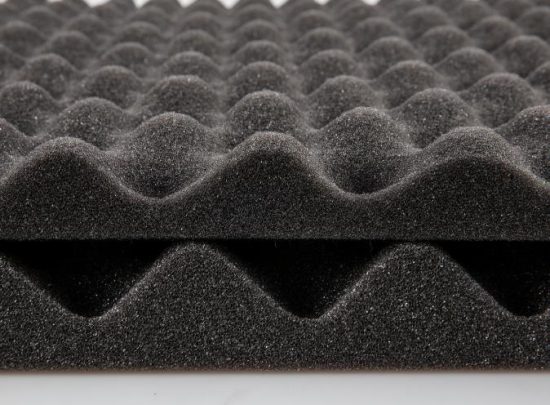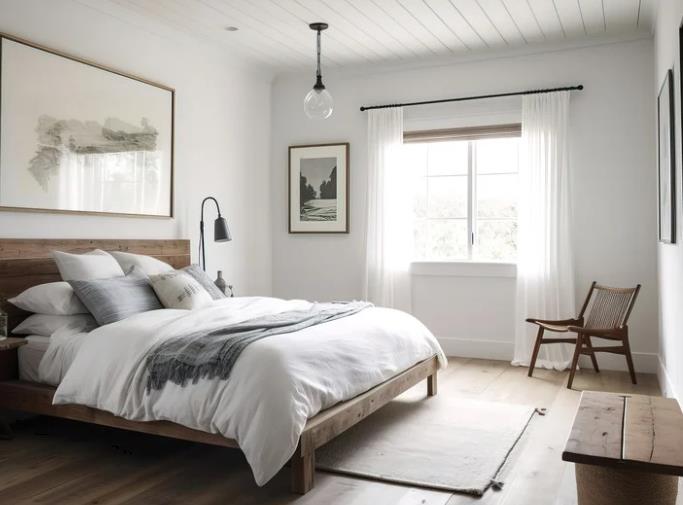A quiet bedroom is vital for good sleep and privacy. With urban noise increasing, many people seek ways to keep their beds quiet. This blog will look at effective practical strategies on how to soundproof a bedroom. We’ll review numerous ways to reduce external and internal noise, creating a calm refuge in your home. These approaches range from basic do-it-yourself repairs to more significant alterations geared to differing amounts of noise interference. Following these suggestions, you may change your bedroom into a peaceful haven perfect for relaxation and uninterrupted sleep.
Why Do We Have to Soundproof Our Bedroom?
More than a nuisance, noise pollution can seriously affect general well-being and cause sleep disturbances. Soundproofing your bedroom increases your comfort and privacy while improving your sleep quality. Building a sound barrier can significantly enhance your living area by blocking out noise from the outside, your neighbors, or even neighboring rooms.
It’s also a wise investment because a soundproofed bedroom can raise the value of your house overall. Good soundproofing also makes a space more adaptable, enabling you to utilize your bedroom as a peaceful study or a tranquil getaway. Soundproofing measures help create a calm space, promoting mental and physical wellness.
How to Soundproof a Bedroom from Inside Noise?
There are various ways to address noise that originates from within your home, such as from overhead or adjacent rooms. These methods will assist you in maintaining a peaceful atmosphere, which is essential for people who need uninterrupted sleep or who work from home.
Seal the Door
Since the door is a popular entrance point for noise, soundproofing your bedroom should start with fixing it. Sound waves can easily go through the gaps under and around the door. Sealed gaps around the door frame can be effectively sealed with weatherstripping installed. Reducing noise leakage is further assisted by a draft stopper installed at the bottom of the door. Ensure the weatherstripping is high quality to increase its longevity and efficacy. This is a do-it-yourself project that is relatively easy to use. It might need to be checked and replaced regularly to keep it functioning correctly. A solid-core door can also improve sound absorption even more. When combined, these modifications strengthen the sound barrier against undesired noise.
Upgrade Your Windows
Windows frequently allow a lot of outside noise to enter the room. Installing double- or triple-glazed units can significantly reduce external noise compared to old, narrow windows. If replacing everything is out of your price range, you can close gaps around window frames by applying acoustic sealants. Secondary glazing is another technique for adding a glass layer to existing windows. Enhancing thermal insulation is another benefit of these methods. Regular maintenance is necessary to guarantee that window seals remain functional. Shutters or heavy blinds on windows can also provide an additional sound barrier. Modern windows improve your home’s security and value and give soundproofing.
Use Thick Curtains

Dense, heavy curtains can effectively block out sound waves before they enter your room. Choose fabrics like velvet or heavyweight thermal curtains for the best possible sound isolation. Make sure the curtains are drawn across the window, ideally hanging past the frame. These curtains provide thermal insulation in addition to reducing noise. The appropriate choice of color and material can improve the room’s aesthetics. Use soundproof windows with these curtains for best results. Curtains must be cleaned regularly to preserve both their operation and attractiveness. This approach is well-liked since it blends practicality with aesthetic appeal.
Add More Soft Furnishings
Soft materials are great at softening noise from the bedroom and absorbing sound. They also reduce echo. Add accessories like wall hangings, luxurious upholstered chairs, and thick rugs. These extras help create a calmer, more peaceful atmosphere in the bedroom. Make sure your materials are heavy and dense to improve sound absorption. Furnishings can be arranged strategically to enhance their ability to reduce noise. This technique gives your room a touch of unique flair as well. Maintaining these objects will keep them functional and aesthetically pleasing. Investing in soft furnishings is an affordable method to improve your bedroom’s quietness and comfort.
Install Acoustic Panels
Acoustic panels are very good at reducing echo since they are made expressly to absorb sound. They can be hung on walls, mainly where noise pollution is a significant issue. Panels are available in a range of sizes to complement the design of the space. Installation is easy to do yourself and can be done on your own.
To preserve the panels’ aesthetic and acoustic qualities, regular cleaning is required. Panels can be used in conjunction with other soundproofing techniques for best results. A longer lifespan and improved sound absorption are guaranteed when using high-quality panels. This technique works exceptionally well in bedrooms that are adjacent to noisy areas.
Consider Acoustic Foam

Similar to acoustic panels, acoustic foam absorbs sound and lessens echo. It comes in a variety of designs and colors and is lighter. Larger surfaces can be covered with this foam without requiring significant improvements. Installing is simple and does not require expert assistance. To increase effectiveness, strategic spots like corners and ceiling joints can be covered with foam. Cleaning and possibly replacing worn pieces are part of routine maintenance. Although it works just as well in bedrooms, this solution is incredibly well-liked in music rooms. Foam can be used in conjunction with other materials to offer complete soundproofing.
Insulate the Walls
Although it requires more work, wall insulation significantly reduces noise. It can suppress incoming and outgoing noise by adding insulation inside the walls. Usually, this system needs to be installed by professionals. Consider using materials like fiberglass or specialty acoustic insulation for optimal effects. Thermal regulation is another advantage of insulation. After insulation, the walls need to be completed and resealed. This approach raises the comfort level and the value of the property over the long run. Routine examinations are advised to make sure the insulation is still effective.
Soundproof the Floor
Soundproofing the floor can make a big difference if noise from below is problematic. Installing a floating floor or a thick underlay is an effective way to stop sound vibrations. In multi-story buildings, this technique is beneficial. Select materials that provide durability and soundproofing. Professional assistance may be needed for installation, depending on its intricacy. Cleaning and gap inspections must be done regularly to maintain the soundproof floor. This investment improves the room’s overall attractiveness in addition to reducing noise. This can be used with other soundproofing techniques to achieve complete noise reduction.
Use White Noise
Masking disturbing sounds with a white noise machine is a workable approach. It muffles undesirable noise by producing a steady, calming tone. This approach is constructive for tenants or short-term circumstances. White noise generators are lightweight and valuable in any situation. They come in several versions, some with extra sound features like ambient music or natural noises. Frequent use offers a continuous acoustic backdrop, which can enhance sleep quality. This method takes a little setup and is reasonably priced. A white noise machine with other soundproofing methods can improve your overall approach to noise reduction.
Conclusion
By implementing these strategies, you may significantly reduce unwanted noise and create a calm haven in your bedroom. The techniques covered here are some of the most varied and successful ways to make a quieter bedroom. Since each method has been shown to increase sound isolation, you can tailor it to your unique situation and financial constraints. By incorporating one or more of these tactics, you can improve your living area and guarantee more restful evenings. Furthermore, soundproofing increases your house’s long-term worth and enhances your comfort right now.
FAQs on Soundproofing a Bedroom
How effective are DIY soundproofing methods compared to professional solutions?
DIY approaches can be highly successful and frequently less expensive. However, expert methods and materials may be required for ultimate sound isolation, especially in high-noise areas.
Are there any quick fixes for temporarily soundproofing a bedroom?
Using items like heavy curtains, rugs, and white noise machines can temporarily relieve noise.
How much does it typically cost to soundproof a bedroom?
The cost to soundproof a bedroom can vary depending on the methods and whether you choose DIY solutions or expert installations. Simple DIY repairs may cost a few hundred dollars, whereas more significant alterations can cost thousands.

